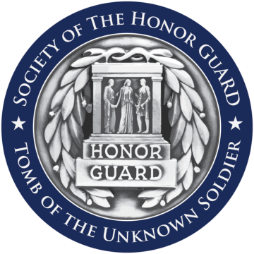Remembering the Battle of Midway
11 years ago

While June 6th is the anniversary of D-Day… let’s not forget the anniversary of the pivotal Battle of Midway, which is widely regarded as the most important naval battle of the Pacific Campaign of World War II. Between June 4–7, 1942, only six months after Japan’s attack on Pearl Harbor, and one month after the Battle of the Coral Sea, the United States (U.S.) Navy under the command of Admiral Chester Nimitz decisively defeated an Imperial Japanese Navy attack against Midway Atoll, inflicting irreparable damage on the Japanese fleet commanded by Admiral Isoroku Yamamoto.
As rapidly as ships, men, and material became available, Nimitz shifted to the offensive. U.S. aircraft sunk the cruiser Mikuma, while the Japanese submarine I–168 torpedoed and sank the disabled Yorktown. Correctly perceiving he had lost and could not bring surface forces into action, Yamamoto aborted the invasion of Midway and withdrew. The defeat at Midway broke the back of the Japanese carrier fleet and resulted in the loss of invaluable air crews. The defeat marked the high tide of Japanese expansion. It also marked the end of major Japanese offensive operations as the initiative passed to the Americans. That August, U.S. Marines landed on Guadalcanal and began the long march to Tokyo.
Battle of Midway - Casualties:
- U.S. Pacific Fleet Losses
- 340 killed
- Aircraft Carrier USS Yorktown
- Destroyer USS Hammann
- 145 aircraft
- Imperial Japanese Navy Losses
- 3,057 killed
- Aircraft Carrier Akagi
- Aircraft Carrier Kaga
- Aircraft Carrier Soryu
- Aircraft Carrier Hiryu
- Heavy Cruiser Mikuma
- 228 aircraft
Battle of Midway Hero Spotlight
U.S. Marine Corps Major General Marion Eugene Carl, was a World War II fighter ace, record setting test pilot, and a notable naval aviator. During World War II he became the first-ever Marine Corps ace. The first of his credited 18 ½ “kills” was a Japanese Zero at the Battle of Midway.

Following the war as a test pilot, Carl was recorded at 650 mph, establishing a new world record [1]. After his retirement after 34 years in the the Marine Corps, he returned to his native Oregon, where he and his wife Edna settled near Roseburg.
His memoir, Pushing the Envelope, coauthored with his friend Barrett Tillman, was published in 1994. He died [2] in 1998 at the age of 82, and was buried with full military honors in Section 4 at Arlington National Cemetery.
by Kevin Welker
-
When U.S. Air Force Captain Chuck Yeager broke the sound barrier in October, he also broke Carl’s record.
-
He was shot to death by an intruder while defending his wife Edna during a home invasion.
Latest News
Dave Rappaport Speech from Reunion 2023
Posted November 6, 2023 in Special ReportSpeech presented to the 2023 Gathering of Tomb Guards Banquet for the Society of the Honor Guard, Tomb of the Unknown Soldier on November 4, 2023. Dear Honored dinner guests, It is indeed an honor to...
Winter Rose Protection for Niphetos in your Never Forget Garden
Posted October 2, 2023 in Centennial**Article republished from the White Rose Journal: The Never Forget Garden Project. To find out more visit HERE ** Follow these 10 tips, so your winter tender Niphetos will thrive every season!...
9/11 Ceremony - Paris 16EME
Posted September 27, 2023The History of the Tomb of the Unknown Soldier in 26 paintings by artist Dave Rappaport going on exhibit in France (three locations).Presented by the Military Women's Memorial and the Society of the...
Support the Society
The Society of the Honor Guard, Tomb of the Unknown Soldier (SHGTUS) is able to provide our programs, events, assistance, scholarships, and services due to the generosity of its members, organizations, and individuals. SHGTUS does not receive institutional funding. Note: The Society of the Honor Guard, Tomb of the Unknown Soldier is a 501(c)(3) organization, so your contributions may be fully tax deductible.
Learn More
Did you know?
Do you guard all night long, even when the cemetery is closed?
The Tomb is guarded 24 hours a day, 7 days a week. In fact, there has been a Sentinel on duty in front of the Tomb every minute of every day since 1937.



